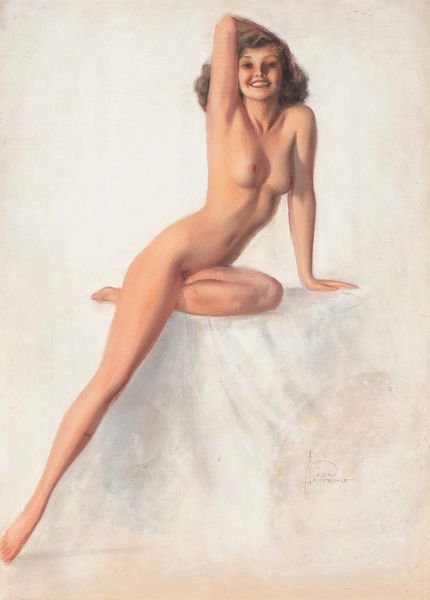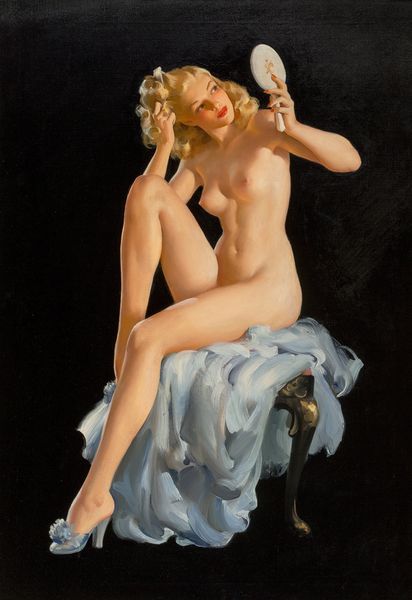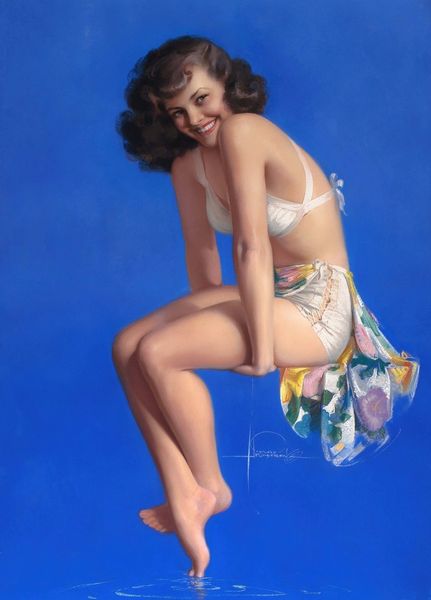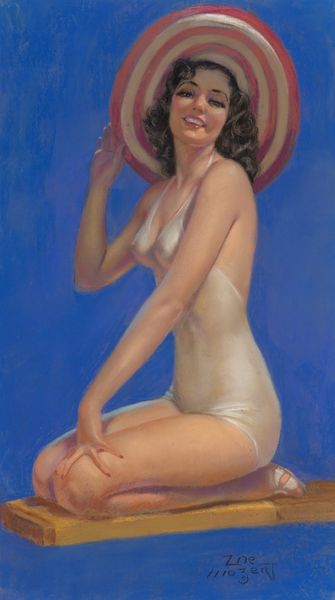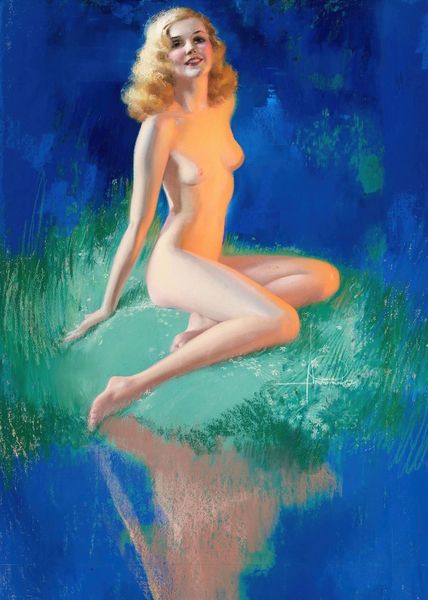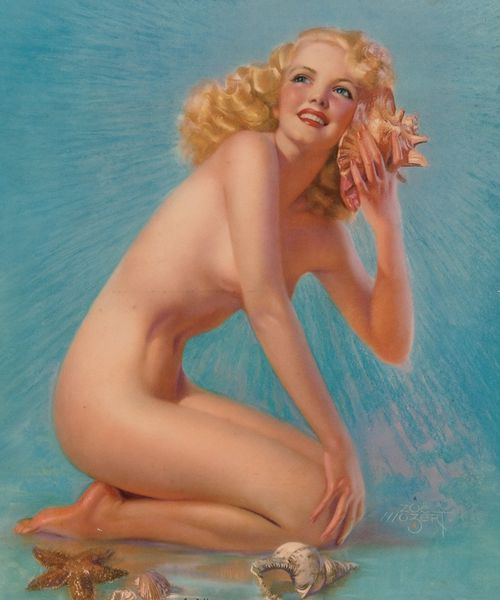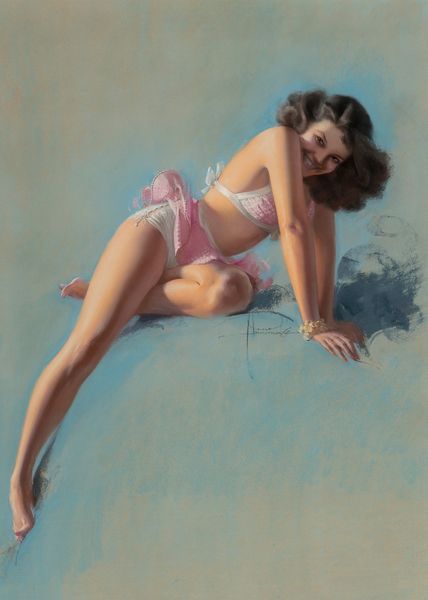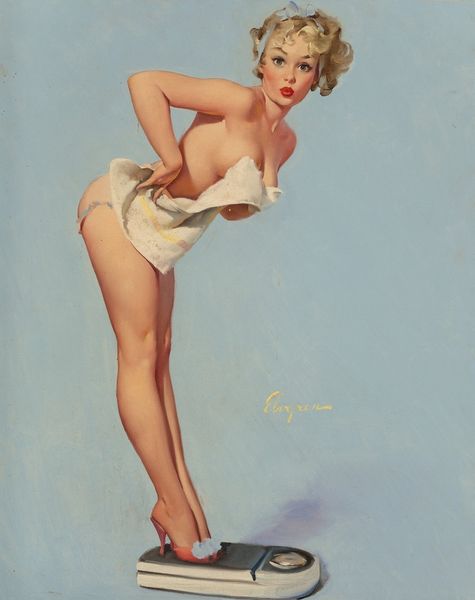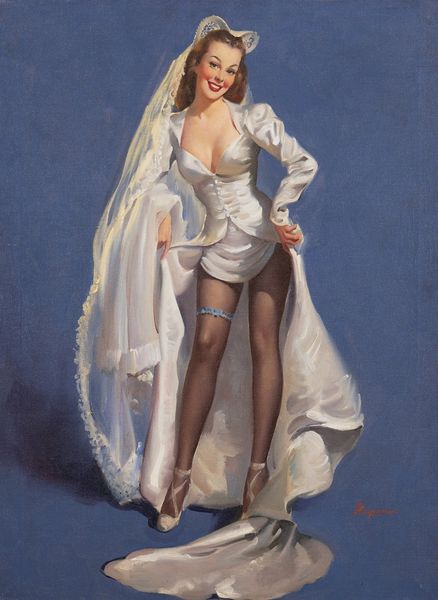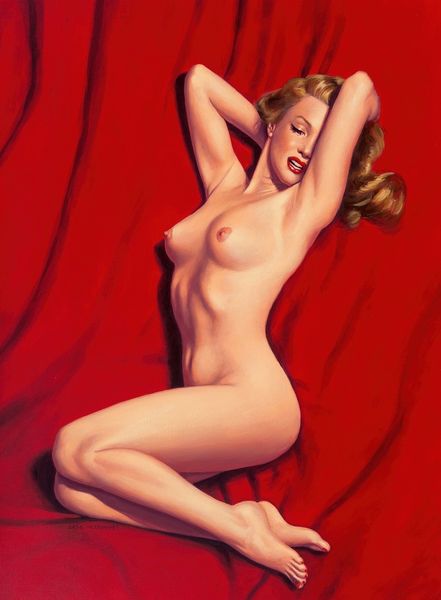
painting, acrylic-paint
#
painting
#
acrylic-paint
#
figuration
#
acrylic on canvas
#
genre-painting
#
nude
#
modernism
Copyright: Modern Artists: Artvee
Editor: Here we have "The Dancer," an acrylic on canvas created by Rolf Armstrong in 1958. The vibrant blue background really makes the figure pop. I'm curious, how do you interpret this work within its historical context? Curator: The painting is evocative of its time, a moment rife with changing societal norms surrounding the female body. What appears to be a celebratory nude must be interrogated beyond surface appeal. The female form has historically been both a symbol of artistic expression and, problematically, one of exploitation and societal control. The figure's pose, her smile, almost feel…performative. Do you think there's an element of the male gaze at play here? Editor: I see what you mean. There's a certain idealized image being presented. But how does Armstrong, as a male artist, fit into this discussion? Curator: Exactly! Examining Armstrong’s own biography and the cultural context is vital. Where did his perspective originate? What role did commercial interests play in shaping this representation? Consider also how this image would be consumed and understood at the time, and how that differs from today. It's important to remember the pervasive power structures at play and how they influence artistic expression, even subconsciously. Editor: So, it's about understanding the complex power dynamics that shaped the creation and reception of this image. Looking at it now, it definitely makes me think about representation, and who is doing the representing. Curator: Precisely. By questioning these seemingly straightforward images, we can start a deeper dialogue about art, identity, and the broader social narratives they participate in. Editor: Thanks for making me look past my initial impressions! I'll never look at this the same way again.
Comments
No comments
Be the first to comment and join the conversation on the ultimate creative platform.
